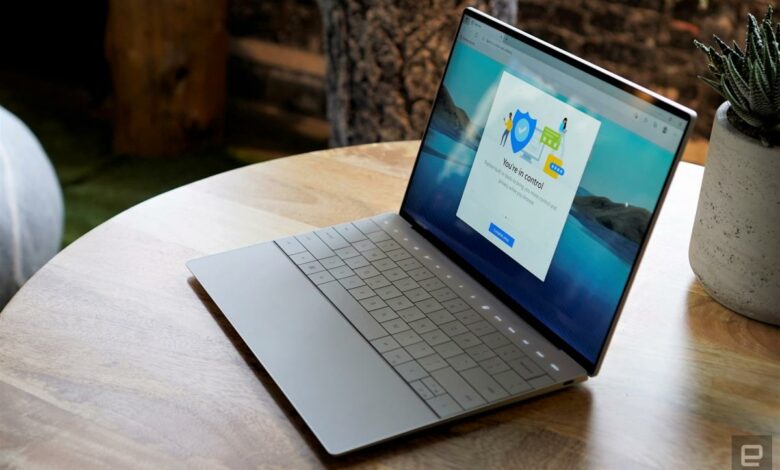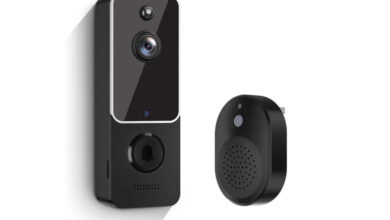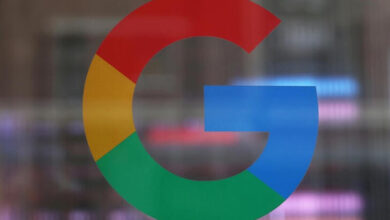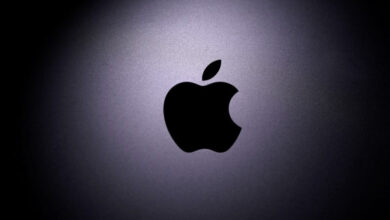The best laptops for 2024

We’ve kicked off 2024 with a slew of new processors from Intel, NVIDIA and AMD, which means there should be plenty of refreshed laptops on the horizon. This year, the term you’ll probably hear the most is AI PCs, that is, computers with neural processors designed to speed up AI tasks. While it’s not necessary for you to buy a laptop just for the sake of AI this year, it’s a good thing to keep an eye on for future-proofing as more companies bring the likes of Microsoft’s Copilot or ChatGPT to their systems. Some notebooks even have dedicated Copilot buttons on the keyboard to make it easier to summon generative AI help.
Even if you’re willing to wait out the AI hype while you shop for your new laptop, there are still plenty of other specs to consider. Should you pay extra for more memory, or get a notebook with a larger screen? We’ve tested and reviewed dozens of the latest laptops to come up with top picks for the best laptops you can buy right now, along with buying advice that will hopefully help demystify the market.
What to consider before buying a laptop
Price
You probably have an idea of your budget, but just so you know, most modern laptops with top-of-the-line specs cost between $1,800 to $2,000 these days. That doesn’t mean you won’t find a good system for under $1,000 — a grand is the base price for a lot of premium 13-inch ultraportables, with chips like Intel’s Core i3 or i5 series. And if that’s too expensive, you’ll still have respectable options in the $600 to $800 range, but they might come with older, slower processors and dimmer screens. You could also consider configurations with AMD’s processors, which have become more reliable and speedy in recent years, while sometimes costing less. I’ve included our favorite budget-friendly model in this best laptop buying guide but we have a list of more-affordable laptop picks that you can check out as well.
Operating system: Apple, Windows or Chrome OS
After working out how much money you want to spend, your next decision is what operating system to choose. As expected, that’s slightly easier for people who prefer an Apple MacBook. Now that the company has brought its M-series chips to the whole lineup, with the Pro models sporting the third generation of those processors — your only real considerations are budget, screen size and how much power you need.
Over on Team Windows, however, the shift to ARM-based chips hasn’t been as smooth and it’s quite unlikely you’ll be considering one in 2024. Though Apple laptops have been able to bring huge increases in battery life while maintaining (and in some cases improving) performance with their own silicon, PC makers have been limited by Windows’ shortcomings. For now, it’s still safer to stick with an Intel or AMD processor.
As for whether you want a PC with a dedicated AI button on the keyboard, that depends on how often you see yourself using Microsoft’s CoPilot generative tools. Given we’re only just seeing the first slate of AI PCs, it would be wiser to wait out the hype and see what improvements might come over time.
Finally, if you don’t really need your laptop for a lot of complicated tasks and mostly want it for Netflix, shopping and Google Docs, it’s worth remembering there’s a third and fairly popular laptop operating system: Chrome OS. If you do most of your work in a browser, then a Chromebook might be good enough, and they’re usually more affordable, too.
Connectivity
It’s worth pointing out that some recent models have done away with headphone jacks. While this doesn’t seem to be a prevalent trend yet, it’s a good reminder to check that a machine has all the connectors you need (otherwise, you’ll have to spend more money on the necessary adapters). Most laptops in 2024 offer WiFi 6 or 6E and Bluetooth 5.0 or later, which should mean faster and more stable connections if you have compatible routers and devices. While 5G coverage is more widespread now, whether you need support for that depends on how much you travel and your need for constant connectivity sans-Wi-Fi.
Display size
Where you plan on taking your laptop also helps in deciding what size to get. Many companies launched new 14-inch machines in the last year, straddling the line between ultraportable and bulkier 15-inch laptops. For most people, a 14-inch screen is a great middle ground. But if you’re worried about weight and want a more portable laptop, a 12- or 13-inch model will be better. Those that want more powerful processors and larger displays will prefer 15- or 16-inch versions.
See Also:
Display: 13.6-inch Liquid Retina | CPU: 8-core M2 | GPU: Up to 10-core | RAM: Up to 24GB | Storage: Up to 2TB | Weight: 2.7 lb (1.24 kg)
Read our full review of the 13-inch MacBook Air M2
As a Windows user, I find myself reluctant to name an Apple MacBook the best overall laptop. But I can’t deny that Apple’s transition to its own Silicon has made its machines better. The latest MacBook Air M2 is a worthy sequel to the M1 that came out in 2020, bringing a fresh design and a performance boost that all users will appreciate. It’s been our top pick for the best laptop available now basically since it launched thanks precisely to that refreshed design and increased power.
However, that’s not to say the M1 was a sluggish machine — quite the contrary. We found it to be impressively fast, and the M2 only builds on top of that excellent performance. It’s probably overkill for a MacBook Air, but that means it will serve most people well for both work and play. Plus, its impressive 16.5-hour long battery life should be enough for anyone to get a day’s worth of work and then some.
As for its design, we like that Apple took a more uniformly thin approach here and retired the wedge shape of the previous model. The MacBook Air M2 also has a lovely 13.6-inch Liquid Retina display, interrupted only by the top notch which holds its 1080p webcam. Its quad-speaker setup is an improvement as well, and all of these small hardware changes add up to a machine that looks and feels more different than you may expect from its predecessor.
The 13-inch Air is certainly the way to go for anyone that prizes portability above all else. However, if slightly more screen real estate is tempting to you, don’t sleep on the 15-inch MacBook Air M2. This laptop does everything that 13-inch model does well, while giving you a larger screen to work with in a still-svelte package. It doesn’t side-step the very Apple issue of having a little less RAM and storage than we’d prefer in its base model (8GB, 256GB SSD), but that doesn’t hold it back. It’s one of the best MacBooks we’ve used recently and it gives fans of the Air lineup a new configuration to consider.
- Refreshed, thinner design
- Gorgeous screen
- Excellent performance
Display: 13.4-inch InfinityEdge | CPU: 13th-gen Intel Core | GPU: Intel Iris XE | RAM: Up to 32GB | Storage: Up to 2TB | Weight: 2.71 lb (1.23 kg)
Read our full review of Dell XPS 13 Plus
Our top pick for the best Windows laptop has long been Dell’s well-rounded XPS 13 series and it remains the best laptop for anyone that doesn’t want a Mac. Yes, the XPS 13 Plus lacks a headphone jack, but the XPS 13 is a well-rounded laptop and still one of the best-looking PCs out there.
Like its predecessors, the Dell XPS 13 Plus offers a lovely OLED display with impressively thin bezels and packs a roomy, comfortable keyboard. It also features a new minimalist design that looks more modern but remains sturdy. I’m not sure about the row of capacitive keys at the top in lieu of traditional function keys, but I’m confident that the laptop’s 12th-gen Intel Core processors will provide a healthy performance boost from the last model.
If you’re not sure about the changes Dell has made to the XPS 13, or if you definitely need a headphone jack, the older generations are still solid options. There’s also the Samsung Galaxy Book 2 Pro series, which feature beautiful OLED screens and sharper webcams in thin and light frames. I also like Microsoft’s Surface Laptops, and the most recent edition offers great performance, versatility and good battery life, albeit in an outdated design.
- Stunning design
- Excellent performance
- Gorgeous OLED display
- Frustrating invisible trackpad
- No headphone jack
CPU: AMD Ryzen 9 | GPU: NVIDIA GeForce RTX 2060 | RAM: 16GB | Storage: 1TB | Screen size: 14-inch | Refresh rate: 144Hz | Connectivity: Bluetooth, Wi-Fi | Battery life: Up to 8 hours
Read our full review of ASUS ROG Zephyrus G14
If you can’t tell by now, we really like the Zephyrus G14. It’s shockingly compact, at just 3.5 pounds, and features AMD’s new Ryzen chips paired together with its Radeon 6000M graphics (we’d recommend the Ryzen 9 model with an RX 6700M for $1,400). While its 14-inch screen is a bit smaller than our other recommendations, it looks great and features a fast 144Hz refresh rate. We also like its retro-future design (some configurations have tiny LEDs on its rear panel for extra flair) that still manages to incorporate plenty of ports. While the G14 has jumped in price since it debuted, it’s still one of the best gaming notebooks around, especially since ASUS has finally added a built-in webcam. — Devindra Hardawar, Senior Reporter
- Compact design
- 144Hz refresh rate
- Excellent performance
- Screen’s on the smaller side
Display: 13.3-inch FHD | CPU: 10th-generation Intel Core i3 | RAM: Up to 8GB | Storage: 128GB | Weight: 3.52 lb (1.6 kg)
Read our full review of the Lenovo Flex 5 Chromebook
Our favorite Chromebook is Lenovo’s Flex 5 Chromebook, which Engadget’s resident Chrome OS aficionado Nathan Ingraham described as “a tremendous value.” This laptop nails the basics, with a 13-inch Full HD touchscreen, a great keyboard and a 10th-generation Intel Core i3 processor. Its 4GB of RAM and 64GB SSD may sound meager, but in our testing the Flex 5 held up in spite of this constraint. It’s also nice to see one USB-A and two USB-C ports, eight hours of battery life and a 360-degree hinge that makes it easy to use the Flex 5 as a tablet. That’s a bonus, especially now that Chrome OS supports Android apps. Though the Flex 5 is two years old by now, this Lenovo Chromebook is a solid deal at around $400. In fact, you can sometimes find it on sale for as little as $300, making it a great option for anyone who needs a basic machine for things like web browsing and online shopping but doesn’t want to spend a lot of money.
- FHD touchscreen
- Good performance
- Solid battery life
- Boring design
- Only 4GB of RAM
Display: 13.3-inch micro-edge | CPU: AMD Ryzen 5000 series | GPU: AMD Radeon | RAM: 16 GB | Storage: 256GB | Weight: 2.2 lb (<1 kg)
Read our full review of HP Pavilion Aero
If you’re looking for a budget laptop priced around $800, your best bet is the HP Pavilion Aero 13. For around $799 (or often less when on sale), you’ll get a Full HD screen with a 16:10 aspect ratio and surprisingly thin bezels, as well as a comfortable keyboard and spacious touchpad. Importantly, the Aero 13 provides solid performance and relatively powerful components compared to others in this price range, with an AMD Ryzen 5000 series processor and Radeon graphics. Plus, this pick for best budget laptop has a generous array of ports and all-day battery life.
- Good performance
- Lightweight design
- Generous port selection
- Boring design
- Backlit keyboard only available on custom orders
Display: 13-inch PixelSense | CPU: Intel Evo i5 | GPU: Intel Iris Xe graphics | RAM: Up to 32GB | Storage: Up to 1TB | Weight: 1.95 lb (883 g)
Read our full review of Microsoft Surface Pro 9
For those who need their laptops to occasionally double as tablets, the Surface Pro series is our pick for the best 2-in-1 laptop. Compared to notebooks with rotating hinges, tablets with kickstands are often much slimmer and lighter. The Surface Pro 9 is Microsoft’s latest 2-in-1 laptop model and if you’ve had your eye on a Surface for a while, just know to get the Intel version of this machine rather than the ARM model. In our testing, we found that the 5G ARM version of the Pro 9 was much slower than a flagship convertible should be and that’s mostly due to the fact that lots of the Windows apps readily available on Intel’s x86 hardware have to be emulated to work on Microsoft’s custom ARM SoC. Considering you’ll pay at least $1,000 for any Surface Pro 9 model, you might as well get a configuration that has as few limitations as possible.
While we have our gripes about the Pro 9’s overall ergonomics, it’s undoubtedly one of the thinnest and lightest laptop alternatives you can get. It’s attractive and has a gorgeous 13-inch display, and we still consider Microsoft’s Type Cover to be one of the best you can get, period. They will cost you extra, though, so be prepared to shell out another $100 to $180 for one. Microsoft’s Slim Pen 2 is another highlight, and it will be a must-buy stylus for anyone that loves to draw or prefers to take handwritten notes. Overall, if you want a machine that can switch seamlessly from being a laptop to being a tablet, the Intel Surface Pro 9 is one of your best bets. Of course, if you’re married to the Apple ecosystem, you should consider an iPad Pro.
- Excellent hardware
- Removable SSD
- Great AI webcam features
- Expensive
- Still suffers from Surface ergonomic issues
FAQs
What is the average battery life of a laptop per charge?
Battery life will vary depending on the type of laptop you have and what you use it for. Gaming laptops have some of the shorter average battery lives in the notebook space because playing laborious titles causes battery to drain faster. You can expect between five and eight hours of life on a single charge with most gaming laptops, but don’t be surprised if you actually get less use per charge if you’re doing heavy things with it. As for regular laptops, you can expect roughly ten hours of life on the best models, but some will fall on the lower and higher ends of the spectrum.
What is the best storage capacity for a laptop?
There is no one-size-fits-all solution when it comes to laptop storage. Most of the best laptops will have configurations with 128GB, 256GB, 512GB and 1TB storage options, and we think most people will be served best by either of the two middle options: 256GB of 512GB. If you use your laptop to store tons of documents and files, or photos and videos, we recommend springing for extra built-in storage or investing in a portable SSD with which you can backup your most important files. It’s also worth noting that Chromebooks tend to come with less built-in storage — 32GB, 64GB or 128GB — since Chrome OS encourages users to save their files in the cloud rather than on a device.
Source link




